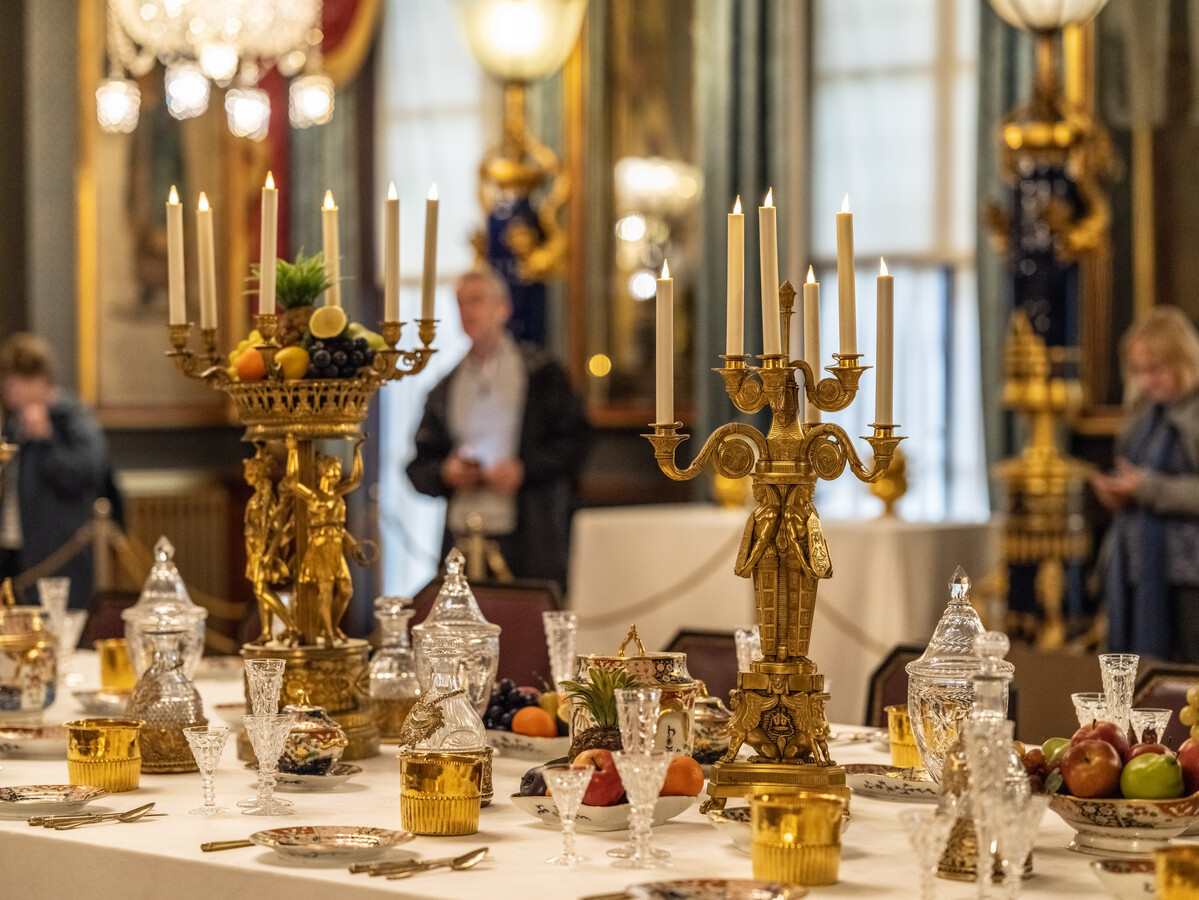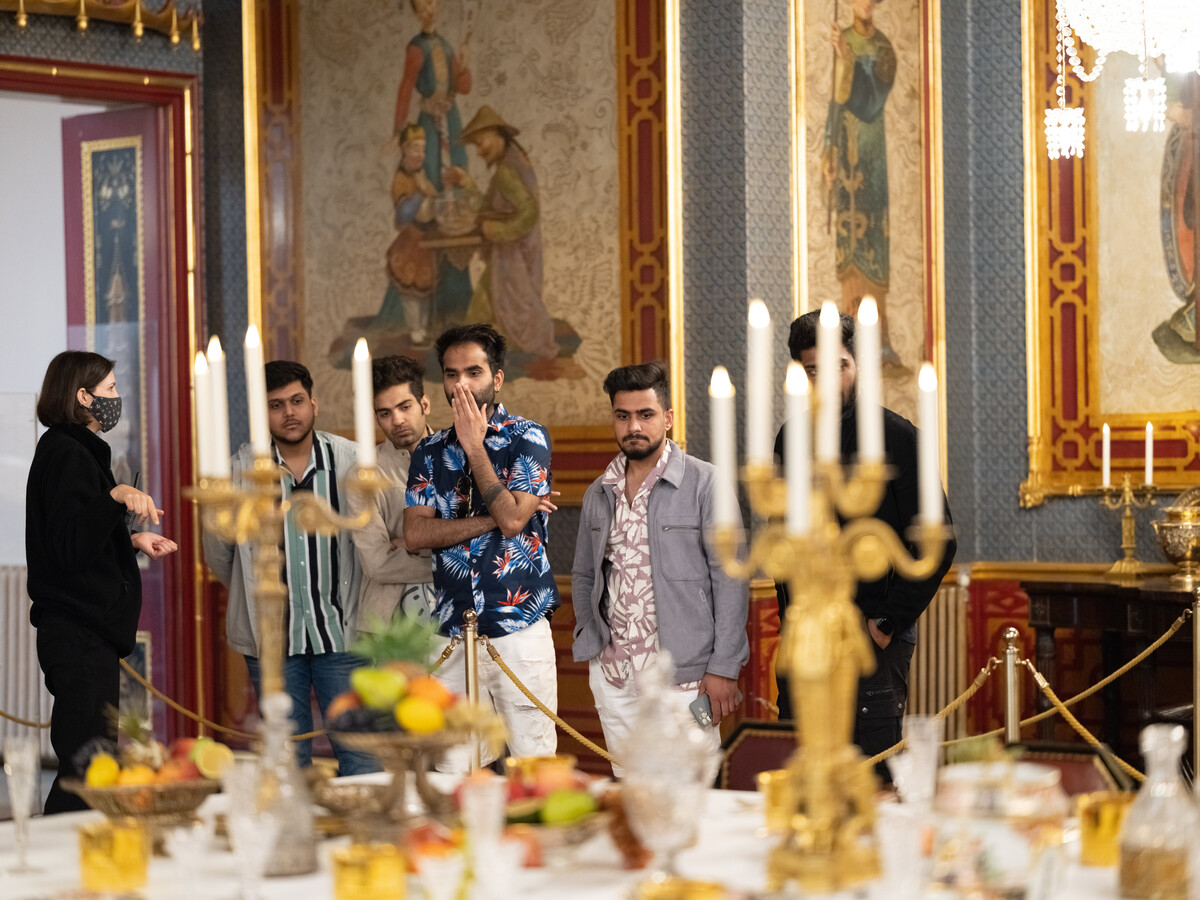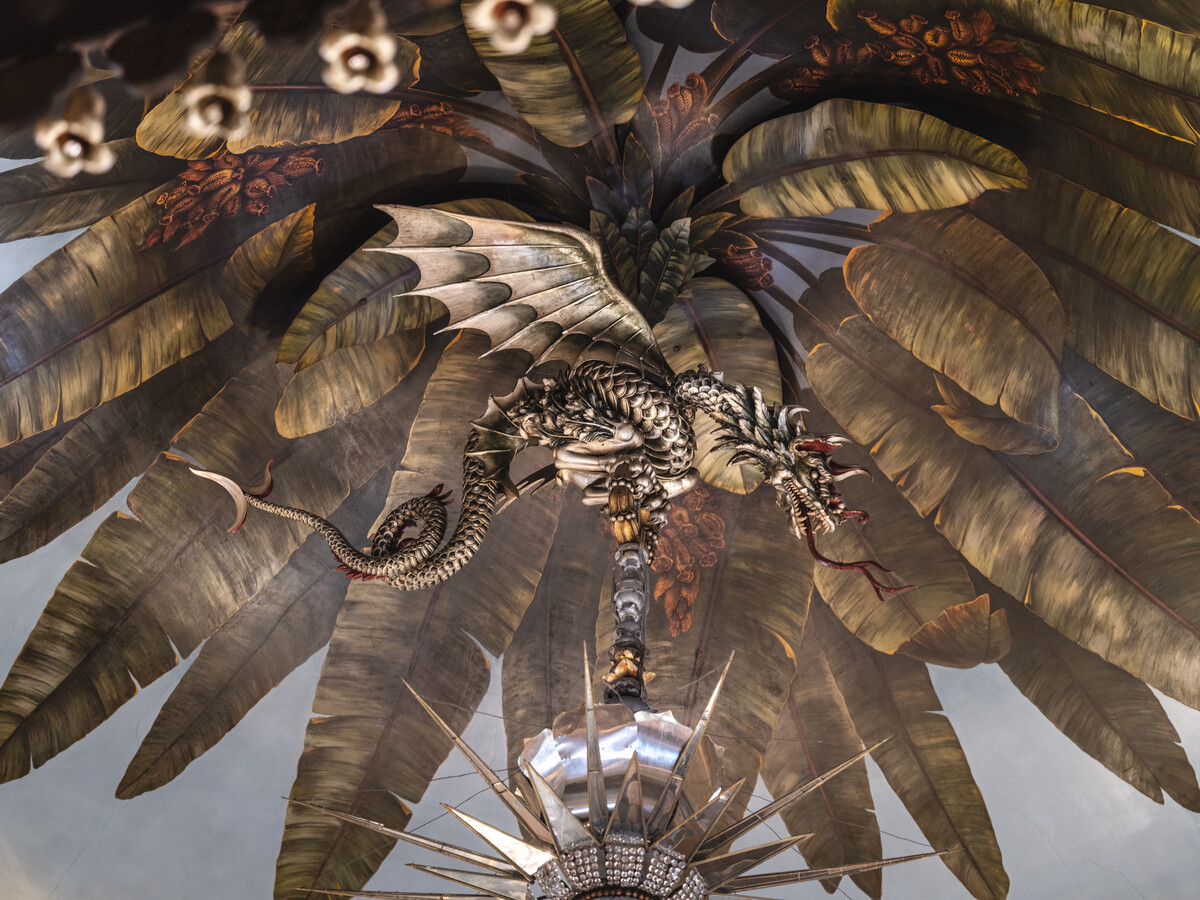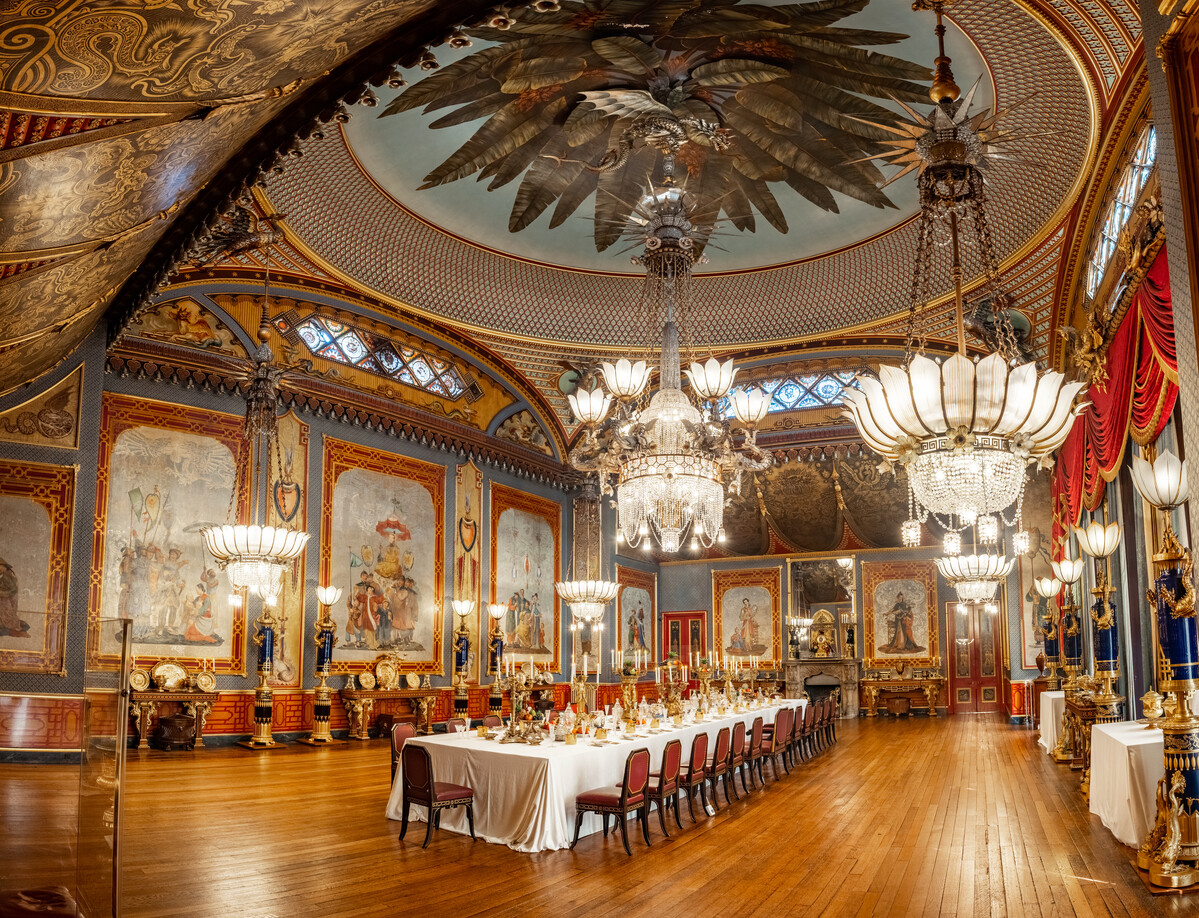
Banqueting Room

Beneath an immense cut-glass chandelier, a table is set for a lavish feast.
The Banqueting Room sums up the splendour of the Royal Pavilion, and George’s appetite for a life of luxury
Food and feasting was central to life at the Royal Pavilion, and the decorative brilliance of the Banqueting Room provided the perfect setting for the grand dinners that took place there. The interior was designed by artist Robert Jones, who worked with the Prince Regent from 1815. It demonstrates not just George’s love of luxury but also his fascination with other cultures.

Shimmering chandeliers
The central chandelier is one of the room’s key features. It hangs like a shimmering cut-glass fountain from a domed ceiling that’s painted to resemble an Eastern sky. Measuring an astonishing 9.1m in length and weighing almost a ton, it is embellished with six silvered dragons breathing ‘fire’ through lotus light shades. Smaller chandeliers hang from flying birds inspired by Chinese mythology, while original lampstands are embellished with carved dragon mounts and glass lotus shades. It’s not difficult to imagine the impact these would have had when illuminated at night.
The influence of Chinoiserie – Chinese-inspired design created for a European audience – is also evident in the wall-mounted canvases depicting scenes of Chinese life. Some of these were created by Robert Jones and his assistants, others were painted in 1864 by French artist Antoine Dury.
A table set for the King
Dinner at the Royal Pavilion was served at 6pm and guests would have been offered up to 70 elaborate dishes. Today, the mahogany table is set for dessert, the most expensive course given the need for specialist confectioners and luxury ingredients. The table setting features a porcelain dinner service dating from 1810, alongside Regency candelabra and ornate silver gilt centrepieces, dessert stands and fruit baskets.
Display was an essential part of upper-class English society in the Regency era. The silver and silver gilt in the Banqueting Room and adjoining Table Deckers Room comes from two of the great aristocratic collections of the period.
